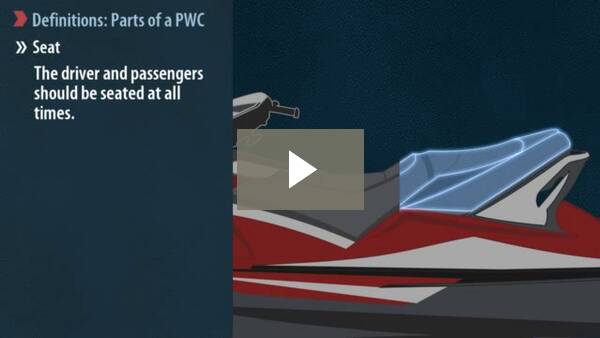Definitions: Parts of a Boat
Bow: The forward or front part of your vessel is called the ‘bow’.
Port: The left side of your boat when you’re seated and looking forward.
Starboard: The right side of your boat when you’re seated and looking forward.
Stern: The rear section of your boat is called the ‘stern’.
Transom: The ‘transom’ is the stern cross-section of your boat.
Waterline: This is the line (on the hull) at which the vessel sits in the water when it’s properly loaded with passengers and equipment.
Draft: ‘Draft’ is the depth of water that your craft needs in order to float freely. The draft is measured as the distance from the waterline to the lowest point of the boat.
Freeboard: ‘Freeboard’ is the distance from the waterline to the lowest point on your boat’s deck.
Propeller: Also known as the prop, the ‘propeller’ rotates underwater to power your motorized boat forward or backward.
Cleat: This is a metal fitting to which a rope or line can be secured.
Gunwale: The top edges of the sides of your boat.
Length: A boat’s length is the distance from the tip of the bow to the farthest point on the stern (front to back, measured in a straight line). The length of your boat excludes a swim platform.
Beam: The width of your boat at it’s widest point.
Memory Tip: Can’t remember which side of your boat is ‘port’ or ‘starboard’? Use this rule of thumb: The word ‘port’ has four letters. So does the word ‘left’. This trick should help you to remember that port is always the left side of the boat when you’re seated and looking forward! (LEFT/PORT)
Definitions: Parts of a PWC
Handlebars and throttle: The operator steers the Personal Watercraft (PWC) by turning the handlebars and applying throttle.
Safety lanyard (kill switch): This is a rope or cord that attaches the kill switch to the operator. If you fall off the PWC, the lanyard will release and shut down the engine.
Seat: This is the area where the operator and passengers sit.
Jet intake: The ‘jet intake’ area sucks in water and then passes the water through a high-speed impeller. Avoid being anywhere near the jet intake area—loose items such as clothing and long hair can be sucked into the jet intake by the force of the water and the rotating impeller.
Jet thrust nozzle: High-powered water travels through the jet thrust nozzle to propel the PWC forward. Remember, never start the engine or operate the PWC if a passenger is positioned behind the jet thrust nozzle.







